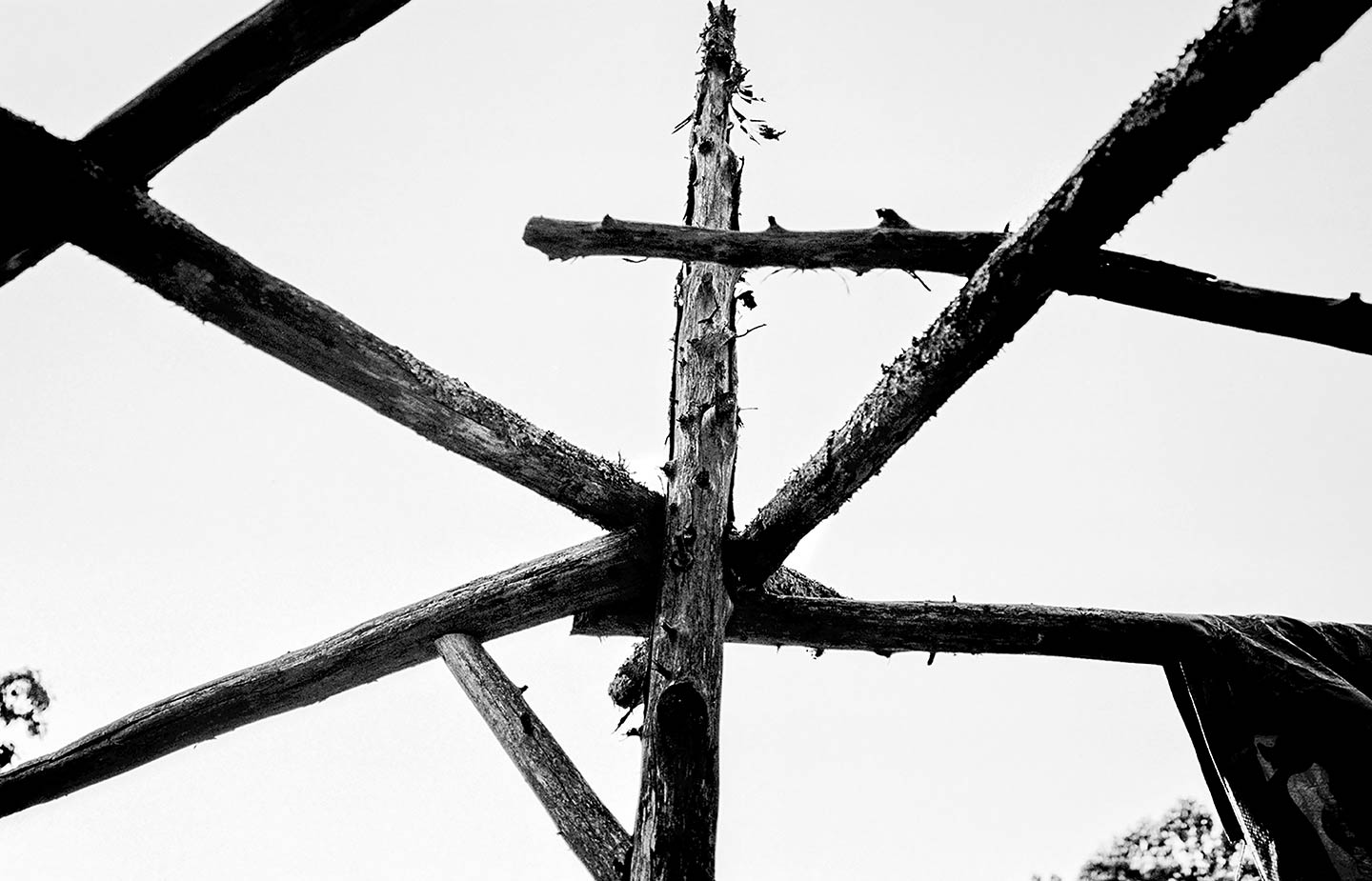This Hard Land
The Eastern Pequots struggle to reclaim tribal territory.
The fourth-largest casino in the world rises out of the eastern Connecticut woods like something from The Wizard of Oz. The two-lane road that winds through rural Ledyard and North Stonington morphs into a highway directing traffic to Foxwoods Resort Casino’s various towers, hotels, restaurants and shops. Elaborate signs welcome guests to the Mashantucket Pequot Tribal Nation.
I drive past the familiar teal-and-white buildings where I’ve seen John Oliver perform standup, sampled Guy Fieri’s trash can nachos and once won $60 on a slot machine. Four miles down the road, I’m searching for the Eastern Pequot Tribal Nation. And I’m lost.
I’m meeting Mitchel Ray, a member of the Eastern Pequot Tribal Council, at one of the oldest—if not the oldest—continuously inhabited native reservations in the country. But there is no highway out here, no road signs, nothing to tell me whether I’m in the right place. My GPS takes me to a Chelsea Groton Bank. Down the street, I stop at a farm stand to ask directions. The woman working the cash register has never heard of the Eastern Pequots. She assumes I’m looking for the Mashantucket Pequot Reservation.
I call Ray, who directs me through a residential neighborhood, past a Texas-style steer farm, and onto a long gravel road that eventually opens into a clearing with a sandwich-board-sized sign: Eastern Pequot Indian Reservation Since 1683.
Four hundred years ago, as many as 8,000 Pequots occupied the coastal area of Long Island Sound from the Niantic River to western Rhode Island—including the 750 acres that make up the Connecticut College campus. But in the mid-1630s, the newly arrived European colonists declared war on the Pequots. Thousands were killed or enslaved; in one attack on a Pequot village in Mystic, hundreds of Pequot men, women, children and elders are believed to have been killed in a single day. Two small bands of Pequots survived the genocide—one group was placed under the rule of the neighboring Mohegan tribe to the west, while the other retreated to the east.
The western group eventually became known as the Mashantucket Pequots, who received federal recognition through a Connecticut delegation-backed U.S. congressional act signed into law by President Ronald Reagan in 1983. A neighboring tribe, the Mohegans, were recognized in 1994.
The eastern group became known as the Eastern Pequots; they began working toward federal recognition in 1978. More than 40 years into the highly politicized battle, they are still fighting.
I PARK MY SUBARU next to Ray’s. He’s driven up—as he does at least twice a week for tribal meetings—from his home in Fairfield County. Like all the Eastern Pequot tribal leaders, Ray is a volunteer.
The reservation is quiet on this unseasonably warm fall Saturday. There are a few modest homes in view, along with several campsites along the edge of the clearing. Ray tells me there are approximately 1,200 members of the Eastern Pequot Tribal Nation, but only about 16 families living on the mostly wooded 225-acre reservation.
“Reservations out West are huge,” he says as we begin to walk down an unpaved road to the right of the clearing.
“This would be like a parking lot for somebody.”
The cleared, grassy area is where the tribe holds its annual ceremonial powwow, a daylong celebration attended by hundreds of tribal members and friends. Ray shows me the community gardens, which the tribe is hoping to expand, and he points out a sacred burial ground before we see a newly constructed pavilion, built over the summer with a $10,000 Davis Projects for Peace grant secured by Lan-Huong “Pansy” Nguyen ’19.
Across from the pavilion, tribal member Leon C. Boykin is working on his truck in his front yard. Fifty feet away, Ray shows me the wooded dig site archaeologists and students from the University of Massachusetts Boston have been excavating.
“It’s believed to be an old one-room schoolhouse,” Ray says. “There’s always something to find because a lot of the land is untouched. And while it’s forest now, it’s all new forest.”
Just beyond the dig is the start of a new nature trail that winds through the Eastern Pequots’ woods, also funded through the Davis grant. Associate professor of botany and environmental studies Chad Jones and his systematic botany students worked with tribal members to map the trail and identify plants that have traditionally been used by Native Americans. Last summer, students researched indigenous plant names, and now the plan is to install signs along the trail, create a map and brochure, and launch a website that corresponds to QR codes with additional information on what’s growing along this trail.
Ray hopes the pavilion will serve as a launching point for the nature walk—a type of outdoor museum drawing anyone interested in learning about the Eastern Pequots and indigenous cultures, but also drawing members of the tribe. Over the summer, the tribe hosted a race through the reservation. This fall, visiting professor of botany Eric Vukicevich led a mushroom foray for tribal members and Conn students.
“Even for recognized tribes, participation is an issue. We are hoping through things such as the archaeological digs, the botany walk and the race effort that we can get everyone together, get everyone involved,” Ray says.
Deeper into the woods, Ray envisions a loop road with new houses—a neighborhood that could draw more members back to their historic lands. He knows it’s a lofty aspiration.
“It’s hard getting people back here when there’s no place to work,” he says. “We are living life like anybody, just trying to make ends meet.”


.jpg)
